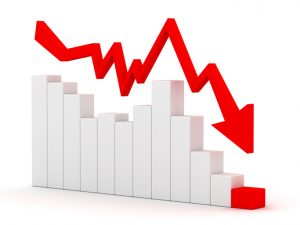Overpriced, Overgrown, And Overlapped: Biglaw’s Fragile Fundamentals And How They’ll Play Out When Recession Hits
Profitability should be tanking. That it hasn’t yet is curious; that it will is certain.
 Biglaw is defying the laws of economics. Over the last 20 years, the Am Law 100 has raised price at over twice the rate of inflation despite adding lawyer capacity at twice the growth rate of the economy and almost doubling the number of cities in which each firm competes. Profitability should be tanking. That it hasn’t yet is curious; that it will is certain. The next downturn will set the tinderbox ablaze.
Biglaw is defying the laws of economics. Over the last 20 years, the Am Law 100 has raised price at over twice the rate of inflation despite adding lawyer capacity at twice the growth rate of the economy and almost doubling the number of cities in which each firm competes. Profitability should be tanking. That it hasn’t yet is curious; that it will is certain. The next downturn will set the tinderbox ablaze.
Let’s start with price. We don’t have a perfect measure of effective billing rates; however, in revenue per lawyer we have a proxy for price that’s valid over longer time periods. Figure 1 shows the history of average revenue per lawyer for the Am Law 100 from 1994 to 2017; for context, the level of inflation (the consumer price index) is also shown. While pricing in law has been somewhat volatile, the cumulative Biglaw price increase over the period is 2.3 times that of inflation. Given that law firm costs rise roughly with inflation, it would seem law firms have built up a hefty margin. The flip side of this is that when the downturn hits, there’s a long way for prices to fall before firms’ operating costs set a backstop. Further, it’s hard to imagine that this relentless price aggression hasn’t fomented a degree of ill-will with some clients who will experience little compunction in extracting their pound of flesh.


Generative AI at Work: Boosting e-Discovery Efficiency for Corporate Legal Teams
One would expect demand for lawyers to grow in line with expansion of the overall economy. Accordingly, Figure 2 presents the history of lawyer numbers at Am Law 100 firms in the context of US GDP growth. The total number of lawyers has grown at 1.7 times the growth of the economy but with significant variability by cohort within this total. While equity partner growth is less than half that of the economy, associate growth is double economic growth and the growth in non-equity partners is literally off the charts — 520 percent over the time period shown. There are a couple of implications here for when the downturn hits: firms will cut people and firms will cut prices. On the former, the lawyer growth profile foreshadows how the downsizing will occur: equity partners will be unaffected, associates will be cut significantly, and non-equity partners will be decimated. On prices, the human desire to retain lawyers and thus to find them work will lead firms who have thus far resisted using major price reductions to garner work to break ranks; realized rates will drop dramatically.

In 1994, the average Am Law 100 firm had offices in 8.2 cities; by 2017 this had grown to 14.7 — a 1.8 times increase. As the legal market is concentrated in major cities, it’s not surprising that this increase has led to significant growth in the number of competitor firms in such cities. Figure 3 focuses on the 20 cities where the largest number of firms have offices and shows the number of firms present in 1994 and 2017. Not surprisingly, almost all firms have offices in NY and Washington DC; interestingly, the number of firms in New York has grown over the period while that of DC shrank slightly — a manifestation of the appeal of higher profit New York practices. We see strong growth in the number of firms with offices across Asia, even though we know all firms struggle to operate profitably there. Perhaps surprisingly, we also see doubling and tripling in the number of firms in US regional centers (San Francisco, Chicago, Houston, etc.) and significant growth across Europe, with London now having the third-highest Am Law 100 firm presence of any city globally. We know that more competitors in a market produces greater competition leading to lower price realization with clients and higher compensation for lateral recruits; thus, new offices are rarely profitable right away. Between this effect playing out in US regional centers and Europe, and the strong growth in Asia, we can infer many firms have significant cross-subsidies in partner compensation, e.g. partners in established cities are covering the compensation of partners in new cities. Such subsidies cause modest friction when profits are rising; when profits start to fall, they precipitate internecine war. It will get ugly at some firms when the business cycle turns.

Sponsored

Curbing Client And Talent Loss With Productivity Tech

Generative AI at Work: Boosting e-Discovery Efficiency for Corporate Legal Teams

Law Firm Business Development Is More Than Relationship Building

Curbing Client And Talent Loss With Productivity Tech
There’s a scene in 1960’s The Magnificent Seven where Steve McQueen’s character, Vin, is asked if he’s worried. Vin replies that he’s reminded of a fella back home who fell off a ten-story building and, as he was falling, people on each floor kept hearing him say, “So far, so good.” Analogously, when an industry is undergoing structural change, the absence of pain in the early stages doesn’t obviate the inevitable; the fundamentals of economics don’t stay in abeyance indefinitely. The implication? Adopt a laser-focused strategy, implement it with discipline, and don’t be like the fella Vin knew back home.
Hugh A. Simons is formerly a senior partner and executive committee member at The Boston Consulting Group and chief operating officer at Ropes & Gray. PowerPoint versions of the charts are available upon request: [email protected].
Sponsored









